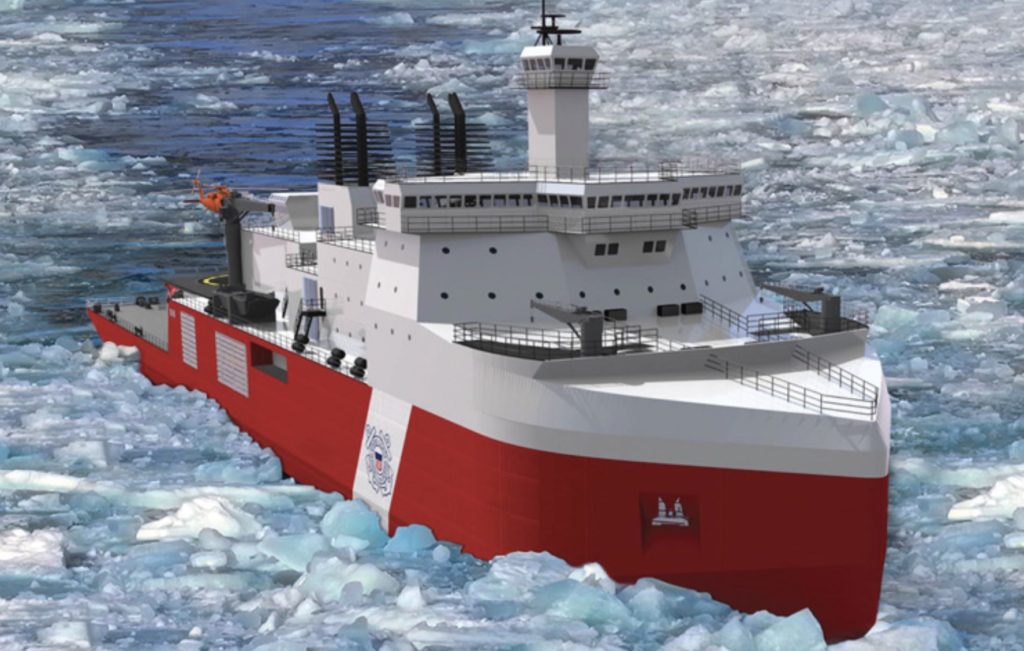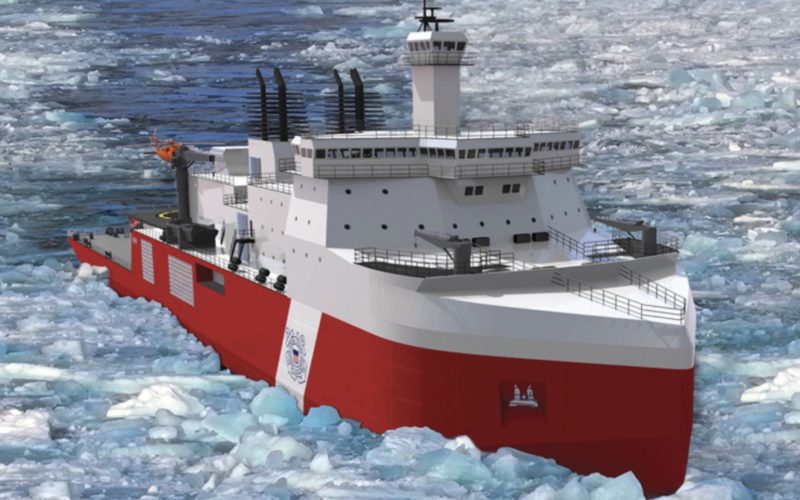(WASHINGTON) — The leaders of the United States, Canada and Finland on Thursday announced their intent to create the Icebreaker Collaboration Effort, or ICE Pact, which is a trilateral arrangement to collaborate on the production of polar icebreakers and other capabilities, alongside United States’ allies and partners, labor and industry.
This collaboration is intended to strengthen the shipbuilding industry and industrial capacity of each nation – and build closer security and economic ties among these countries through information exchange and mutual workforce-development focused on building polar icebreakers, as well as other Arctic and polar capabilities.
Components of the arrangement
This arrangement will consist of three initial components: enhanced information exchange between the United States, Canada and Finland; collaboration on workforce development; and an invitation to allies and partners to purchase icebreakers built in American, Canadian or Finnish shipyards.
Due to the capital intensity of shipbuilding, long-term, multi-ship order books are essential to the success of a shipyard. The governments of the United States, Canada and Finland intend to leverage shipyards in the United States, Canada and Finland to build polar icebreakers for their own use, as well as to work closely with like-minded allies and partners to build and export polar icebreakers for their needs at speed and affordable cost.

As yards in the United States, Canada and Finland make significant investments in their domestic capacity to build these vessels for their own needs, the ICE Pact invites allies and partners to purchase vessels from American, Canadian and Finnish shipyards with experience building polar icebreakers. Through diplomatic collaboration, shipyards focused on building polar icebreakers can reach the scale needed to reduce costs for allies and partners that need access to the polar regions.
Implementation of the arrangement
By the end of the year, the United States, Canada and Finland will develop a joint memorandum of understanding that will outline a framework for how this arrangement will be implemented within each country – and a mechanism for adding or including additional allies and partners as participants. The process to develop this non-binding arrangement will be conducted through a regular trilateral consultation process during this period.
Strengthening America’s polar capabilities
The U.S. Coast Guard requires polar icebreaking capabilities to support the country’s economic, commercial, maritime and national security needs in the polar regions. The Coast Guard is working to build new heavy icebreakers under the Polar Security Cutter (PSC) Program. These ships will be national assets that ensure access to both polar regions – and will be capable of executing key Coast Guard missions, including defense readiness; marine environmental protection; ports, waterways and coastal security; and search and rescue. The ships will operate worldwide, alongside the polar icebreakers of America’s allies and partners, and face the range of extreme environmental conditions found in the polar, tropical, and temperate regions.
The Coast Guard is working with Bollinger Shipyards to build the first polar security cutters. The Louisiana-based shipbuilder will continue its effort to deliver new American-made icebreakers to the Coast Guard’s polar icebreaking fleet.
These vessels will be the first American-built heavy icebreakers in over 50 years – and the foundation of the American effort to enhance our surface presence in the polar regions. The ICE Pact will continue to support their efforts, and the president’s commitment to build more ships in American shipyards.
Under this trilateral arrangement, Canadian, Finnish and American capacity and know-how for building polar icebreakers will help deliver a fleet of new polar icebreakers for the U.S., its allies, and other partners.

